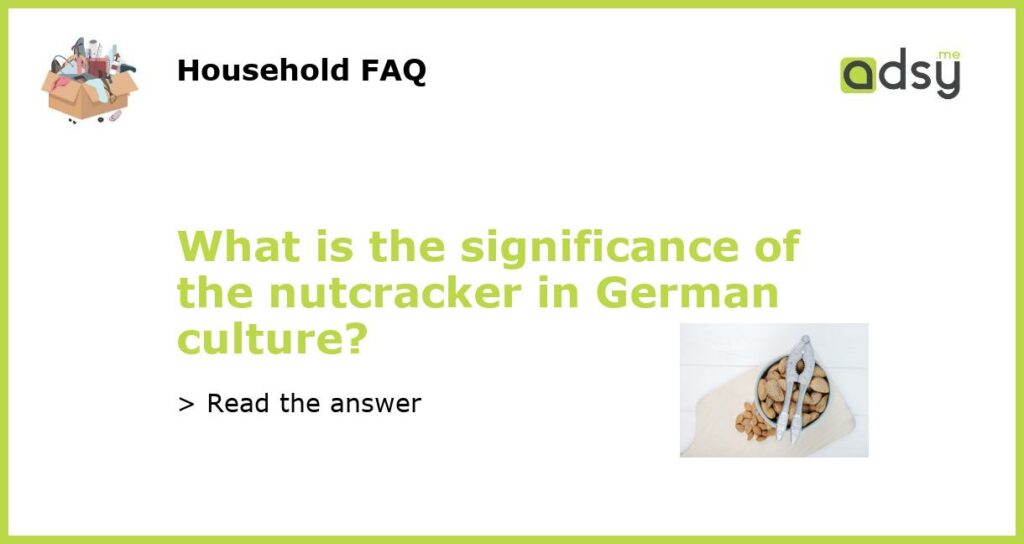The Nutcracker: A Symbol of German Culture and Christmas
The nutcracker has been a prominent symbol of German culture for centuries, particularly during the holiday season. This wooden figure with a large mouth that can crack open nuts has been a familiar sight in many Christmas displays and markets in Germany and around the world. But what is the significance of the nutcracker in German culture?
A Brief History of the Nutcracker
The earliest known nutcracker dates back to the 15th century in Germany. At that time, nutcrackers were made from wood or metal and were used to crack open nuts. However, it was not until the 17th century that nutcrackers began to be carved into human or animal figures, such as soldiers, kings, or animals. The nutcracker became associated with the Christmas season in the 19th century after the publication of the story “The Nutcracker and the Mouse King” by E.T.A. Hoffmann, which was later adapted into the famous ballet by Tchaikovsky.
The Nutcracker as a Symbol of Good Luck
In Germany, the nutcracker is considered a symbol of good luck. It is believed that the nutcracker can protect a household from evil spirits and danger. Some people even place a nutcracker in their windowsill to protect their home from harm. Additionally, nutcrackers are often given as gifts during the holiday season to wish the recipient good luck and fortune in the coming year.
The Nutcracker in German Christmas Traditions
The nutcracker has become a staple in German Christmas traditions. It is often displayed in the home during the holiday season, either as part of a larger Christmas display or on its own. Additionally, nutcrackers are frequently used as decorations on Christmas trees and in wreaths. Some German towns even hold nutcracker markets, where vendors sell a variety of nutcrackers in different shapes and sizes.
The Legacy of the Nutcracker
The nutcracker continues to be an important symbol of German culture and the Christmas season today. The popularity of the ballet “The Nutcracker” has helped to keep this tradition alive, and nutcrackers remain a popular decoration in German homes and Christmas displays around the world. Whether you are familiar with the story of “The Nutcracker and the Mouse King” or simply admire the unique and whimsical appearance of the nutcracker, there is no denying the significant role it has played in German culture.






